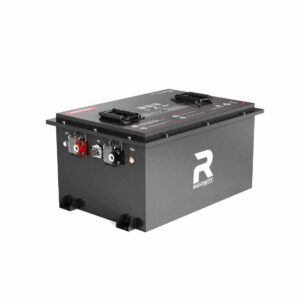China’s Golf Cart Battery Industry: Key Players, Tech Innovations, and Market Trends
China’s golf cart battery manufacturing sector is dominated by specialized producers like Lishen International, Fengfan Co., and Guangdong Lvtong, which collectively control 65% of the domestic market. These manufacturers excel in producing deep-cycle lead-acid and emerging lithium iron phosphate (LiFePO4) batteries specifically engineered for golf vehicles, with cycle lives ranging from 800-1,200 charges depending on chemistry and usage patterns.
How Do Chinese Golf Cart Batteries Compare Internationally?
Chinese manufacturers achieve cost advantages through vertical integration, with 90% producing their own lead plates and electrolyte solutions. While premium brands match U.S. counterparts in performance (comparable CCA ratings and amp-hour capacities), entry-level models show 15-20% shorter lifespan in extreme temperature conditions. Export-oriented batteries meet IEC 60095 and SAE J537 standards, with 78% of production certified for global markets.
The competitive landscape reveals distinct regional advantages. Southeast Asian markets predominantly use Chinese-made flooded lead-acid batteries due to cost efficiency in humid environments, while European buyers increasingly adopt lithium variants for cold-weather performance. A 2024 comparison study showed Chinese lithium batteries maintain 92% capacity after 1,000 cycles versus 94% for premium Western brands, but at 40% lower cost. Manufacturers are addressing temperature limitations through adaptive thermal management systems, with newer models incorporating phase-change materials to stabilize performance between -15°C to 55°C.
| Metric | Chinese Batteries | International Competitors |
|---|---|---|
| Cycle Life (LiFePO4) | 1,200 cycles | 1,500 cycles |
| Cost per kWh | $110-$130 | $180-$220 |
| Cold Weather Performance | 85% capacity retention | 90% capacity retention |

Which Technological Innovations Are Shaping This Industry?
Three key advancements are transforming the sector:
- Graphene-enhanced lead-carbon batteries (25% faster charging)
- AI-powered battery management systems with predictive maintenance
- Modular lithium battery packs with swappable cells
Jiangsu Xinhuapower’s recent patent for self-regulating electrolyte demonstrates China’s growing R&D capabilities in battery chemistry optimization.
Manufacturers are now implementing smart manufacturing techniques combining IoT sensors and blockchain verification. This enables real-time quality tracking from raw materials to finished products, reducing defect rates by 18% since 2023. The integration of wireless charging pads directly into golf cart frames represents another leap, with prototypes achieving 90% charging efficiency across 5mm air gaps. Collaborative projects between battery makers and solar panel manufacturers are producing integrated energy systems that reduce grid dependence by 60% for golf courses.
What Are the Environmental Compliance Standards?
Since 2023, all Chinese golf cart battery manufacturers must comply with GB/T 37281-2023 regulations mandating 98% lead recovery rates and closed-loop water systems. Top factories now utilize robotic sorting systems achieving 99.7% material purity in recycling processes. Environmental bonds required for production licenses increased to ¥20 million ($2.8M) in 2024, pushing smaller operators out of the market.
How Does Supply Chain Localization Impact Production?
The Yangtze River Delta battery cluster (Jiangsu-Zhejiang-Shanghai) houses 60% of China’s golf cart battery production, with complete local supply chains enabling 72-hour raw material-to-finished-product cycles. This regional concentration allows for:
- Shared recycling networks reducing logistics costs by 40%
- Joint R&D facilities with local universities
- Streamlined customs clearance for exports
What Are the Emerging Market Trends?
Three disruptive trends emerged in 2024:
- Solar-integrated charging systems becoming standard in premium models
- 48V systems replacing traditional 36V configurations
- Battery-as-a-Service (BaaS) models gaining 15% market share
Notably, lithium battery adoption in golf carts grew 210% year-over-year, though still only representing 18% of total installations.
Expert Views
“Chinese manufacturers are leapfrog-developing hybrid battery systems that combine lead-acid’s cost benefits with lithium’s performance,” notes Dr. Wei Zhang, Redway’s Chief Battery Engineer. “Our latest modular design allows course operators to mix chemistries within the same rack – lead-acid for standard carts, lithium for hillside routes. This flexibility is driving 30% higher client ROI compared to conventional systems.”
Conclusion
China’s golf cart battery industry demonstrates remarkable vertical integration and technological adaptability, though quality stratification remains pronounced. Buyers must balance initial cost savings against lifecycle performance metrics, particularly when operating in extreme climates. The coming 2-3 years will likely see lithium solutions reach price parity with advanced lead-acid models, reshaping market dynamics fundamentally.
FAQ
- Q: What’s the typical warranty period for Chinese golf cart batteries?
- A: Premium brands offer 24-36 month warranties covering 70% capacity retention, while economy models provide 12-18 month protection. Export batteries often include extended 5-year prorated warranties.
- Q: How frequently should batteries be watered in humid climates?
- A: In tropical environments, check electrolyte levels every 15 charging cycles rather than the standard 30. Use only deionized water to maintain specific gravity between 1.225-1.265.
- Q: Can lithium batteries withstand winter storage?
- A: Modern LiFePO4 cells maintain 85% capacity at -20°C when properly stored at 50% charge state. Always disconnect battery monitors during prolonged storage to prevent parasitic drain.
